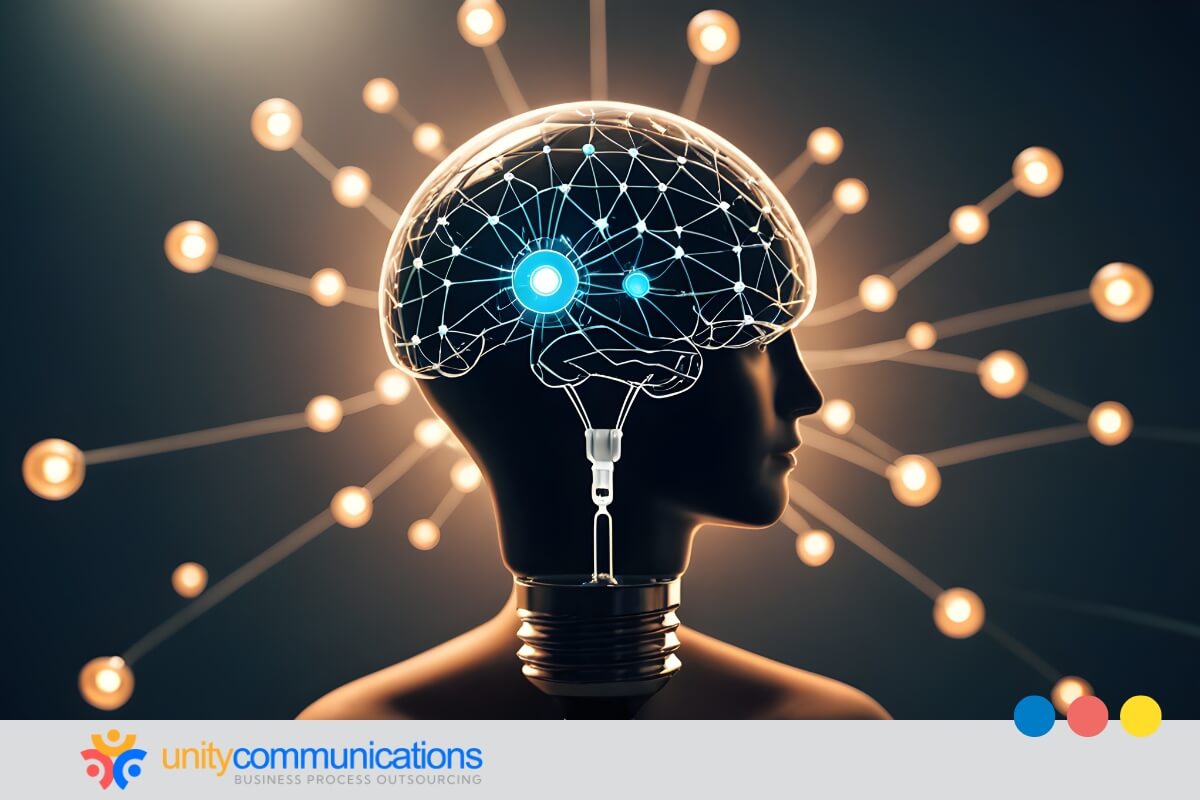Table of Contents
Artificial intelligence (AI) might seem like a modern invention, but its story began centuries ago. Long before breakthroughs in generative AI (GenAI) and machine learning (ML), philosophers, mathematicians, and computer scientists explored how machines could mimic human reasoning and intelligence.
From early theories about mechanical reasoning to the creation of the first AI programs, each watershed moment has brought us closer to the AI-driven world we know today.
In this article, we trace critical AI milestones that define the field and explain why they matter to you today, whether you’re exploring AI adoption, building intelligent systems, or simply being curious about the technology reshaping your industry.
1950: The Turing test—can machines think?

One of the earliest and most influential AI milestones in history came in 1950 when British mathematician and computer scientist Alan Turing introduced what we now call the Turing Test. In his landmark paper, “Computing Machinery and Intelligence,” Turing posed the provocative question: “Can machines think?”
To explore this idea, he proposed an “imitation game,” where a human evaluator interacts with both a person and a machine through written communication. If the evaluator cannot reliably distinguish between the human and the machine, the machine is said to demonstrate intelligence.
The Turing Test set the stage for decades of AI research. It provided a measurable, though often debated, framework for evaluating machine intelligence and helped shift AI from philosophical speculation to scientific inquiry.
While modern AI and AI agents have advanced far beyond Turing’s original vision, his test remains a touchstone in discussions about machine cognition and human-like reasoning.
1956: Dartmouth conference—AI gets its name and mission
Another defining milestone occurred in 1956 at the Dartmouth Summer Research Project on Artificial Intelligence, often referred to simply as the Dartmouth Conference. The event—organized by John McCarthy, Marvin Minsky, Nathaniel Rochester, and Claude Shannon—brought together leading researchers to explore the possibility of creating machines that could simulate aspects of human intelligence.
It was here that John McCarthy formally introduced the term “artificial intelligence.” It’s a label that gave the emerging field both identity and legitimacy. For the first time, researchers had a shared framework for investigating what artificial intelligence is and how it could be developed.
The conference is widely regarded as the symbolic birth of AI as an academic discipline, transforming a collection of scattered ideas into a unified research agenda.
While the participants were optimistic, even predicting rapid progress within a generation, the challenges of building truly intelligent systems soon became apparent. Still, this gathering stands as a foundational AI milestone, one that marked the beginning of sustained, organized research into intelligent machines and inspired decades of innovation.
1957: The perceptron—teaching machines to learn
In 1957, psychologist Frank Rosenblatt introduced the perceptron, marking an important milestone in the development of ML. The perceptron was a simplified model of how neurons in the human brain work, designed to recognize patterns and learn from data inputs. This was the first time researchers had a system that could improve its performance over time rather than relying solely on rigid programming.
The perceptron generated excitement because it showed that computers could adapt, opening the door to more ambitious experiments in AI. While its capabilities were limited as it struggled with complex, nonlinear problems, the concept paved the way for neural networks, which later became central to deep learning.
Despite its constraints, the perceptron is remembered as a groundbreaking step in AI development. It shifted research from abstract theory to practical experimentation. It set the stage for future innovations in ML and intelligent systems.
1966: ELIZA—the first chatbot and the illusion of understanding
Computer scientist Joseph Weizenbaum at MIT developed ELIZA in 1966. ELIZA was a program that became one of the earliest chatbots and landmark AI milestones.
ELIZA simulated human conversation using pattern matching and substitution techniques. Its most famous script, “DOCTOR,” mimicked a Rogerian psychotherapist, reflecting users’ statements as questions.
While ELIZA had no fundamental understanding of language, many people were surprised by how natural the interaction felt. Some even attributed genuine intelligence to the program, a reaction that revealed as much about human psychology as it did about AI.
ELIZA’s creation demonstrated the potential of natural language processing (NLP) and highlighted the advantages and the disadvantages of AI. Although it could simulate human conversation, it lacked true comprehension or empathy. This serves as a reminder of how early experiments influenced expectations surrounding human-computer interaction.
1970s to 1980s: Expert systems—AI moves into the real world

One of the most significant AI milestones during this period was the emergence of expert systems, a type of program that replicated the decision-making capabilities of human specialists. These systems utilized extensive rule sets and knowledge bases to solve problems in medicine, engineering, and business.
A well-known example was MYCIN, developed at Stanford University. It helped diagnose bacterial infections and recommended treatments. For the first time, AI began moving beyond academic labs into practical, real-world applications.
This commercialization brought both success and challenges. Expert systems demonstrated that AI could deliver measurable value. However, they were expensive to build and challenging to maintain, as knowledge had to be constantly updated.
This era marked a critical step because it proved that intelligent systems could augment human expertise and generate business impact. It paved the way for the enterprise AI solutions we have today.
1986: Backpropagation—unlocking deep learning
Geoffrey Hinton, David Rumelhart, and Ronald Williams helped popularize the use of backpropagation in training neural networks in 1986. Backpropagation, short for “backward propagation of errors,” is an algorithm that allows networks with multiple layers to adjust their weights and improve performance through repeated learning cycles.
Before this breakthrough, neural networks were limited because they could not effectively train beyond a single layer of connections. Backpropagation solved this problem with multilayer perceptrons. This dramatically expanded the range of tasks neural networks could handle, from image recognition to speech processing.
Although computing power at the time limited large-scale applications, the popularization of backpropagation laid the foundation for deep learning decades later. This milestone marked the transition from simple, shallow networks to architectures capable of modeling much more complex patterns.
1997: Deep Blue vs. Kasparov—AI’s first global stage
IBM’s Deep Blue made history by defeating Garry Kasparov, the reigning world chess champion, in a six-game match. This showed that a computer could outperform one of the greatest human minds in a game long considered the pinnacle of strategic thinking.
Deep Blue’s strength stemmed from its ability to evaluate up to 200 million possible moves per second, leveraging raw computational power in conjunction with sophisticated search algorithms and expert knowledge of chess. While the machine did not “think” like a human, its victory captured global attention and showed how AI could achieve superhuman performance in specific domains.
The match was a turning point in public perception of AI. What had once seemed theoretical was now unfolding on the world stage. Although Deep Blue was a specialized system rather than a step toward general intelligence, this AI milestone shows the potential to tackle complex, high-level tasks. It foreshadowed the breakthroughs in ML and game-playing AI that would follow in the decades ahead.
2012: AlexNet—the deep learning revolution begins
The year 2012 is known for the breakthrough of AlexNet, a deep convolutional neural network developed by Alex Krizhevsky, Ilya Sutskever, and Geoffrey Hinton.
In the annual ImageNet competition, where algorithms are tasked with classifying millions of images across thousands of categories, AlexNet delivered a stunning performance. It cut the error rate by nearly half compared to its closest competitor, a leap that shocked the AI community.
What set AlexNet apart was its use of deep learning techniques, powered by graphics processing units (GPUs) that enabled far more efficient training of large neural networks. It could recognize patterns in massive datasets, demonstrating the true potential of deep neural networks, which had been considered impractical for decades due to computational limitations.
AlexNet’s victory proved that deep learning could outperform traditional methods by a wide margin and spurred rapid investment, research, and applications across industries. From computer vision and speech recognition to recommendation engines and medical imaging, the impact of this milestone continues to shape the AI of today.
2016: AlphaGo vs. Lee Sedol—AI learns creativity
Google DeepMind’s AlphaGo achieved an AI milestone that stunned the world by defeating Lee Sedol, one of the greatest players of the ancient board game Go. Unlike chess, Go has an almost unimaginable number of possible moves, making brute-force computation impossible. Success required creativity, strategy, and intuition—qualities long thought to be uniquely human.
AlphaGo combined deep neural networks with reinforcement learning, which allowed it to learn from analyzing millions of professional games and playing against itself to develop novel strategies. In its historic match, AlphaGo’s unexpected moves depicted a level of ingenuity that even experts described as “beautiful” and “creative.”
This was more than a victory in a game. It was proof that AI could tackle problems once considered beyond machine capability. AlphaGo showed how AI could learn, adapt, and outperform human expertise in highly complex domains.
2020s: GenAI—from labs to billions of users

The 2020s ushered in one of the most transformative AI milestones to date: the rise of GenAI. Unlike earlier systems that focus on classification, prediction, or rule-based reasoning, GenAI can create. It can produce text, images, audio, code, and even video that rival human output.
The turning point came in 2020 with the release of GPT-3, a large-language model with 175 billion parameters. Trained on massive amounts of internet data, GPT-3 demonstrated unprecedented fluency in generating human-like text, from essays and articles to dialogue and programming scripts.
Breakthroughs in multimodal systems such as DALL·E and Stable Diffusion followed, which enabled the creation of realistic and imaginative images from text prompts. In 2022, ChatGPT brought GenAI into the mainstream, reaching millions of users worldwide within weeks of its launch.
GenAI is transforming industries by accelerating content creation, enhancing customer support, and augmenting decision-making. As of 2025, ChatGPT has around 800 million weekly active users globally. It processes 2.5 billion user prompts daily, a testament to how quickly organizations and individuals have adopted the technology.
Huge AI milestone: Agents and human collaboration
Each breakthrough brings machines closer to working alongside people in more meaningful ways. The next frontier is AI agents—autonomous systems that can analyze data, make decisions, and act across business processes.
Companies are already deploying them to streamline operations, personalize customer interactions, and unlock new efficiencies. Reports project that the global AI agents market will reach $50.31 billion by 2030.
However, success with AI agents requires a balance between automation and human expertise. This is where understanding how outsourcing works is a must. A hybrid business process outsourcing (BPO) model blends skilled talent with advanced AI tools. This approach enables you to scale faster, manage complexity more effectively, stay compliant, and apply AI responsibly.
The bottom line
While AI continues to raise valid questions about ethics, accuracy, and responsible use, its milestones show how far we’ve come in merging human creativity with machine intelligence. As your business plans its next step in AI adoption, the key is pairing the best of both worlds: human expertise and intelligent automation.
This is where hybrid collaboration matters. A hybrid BPO model combines advanced AI tools with skilled talent, giving you the flexibility to scale faster and deploy AI responsibly.
Ready to turn AI into your competitive advantage? Let’s connect.




